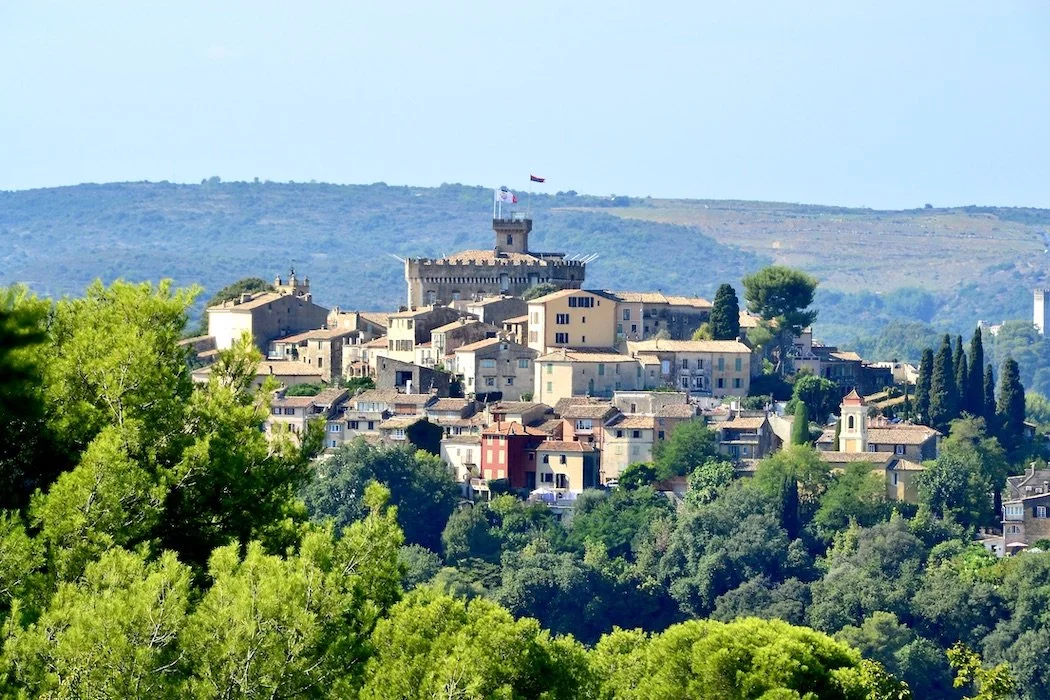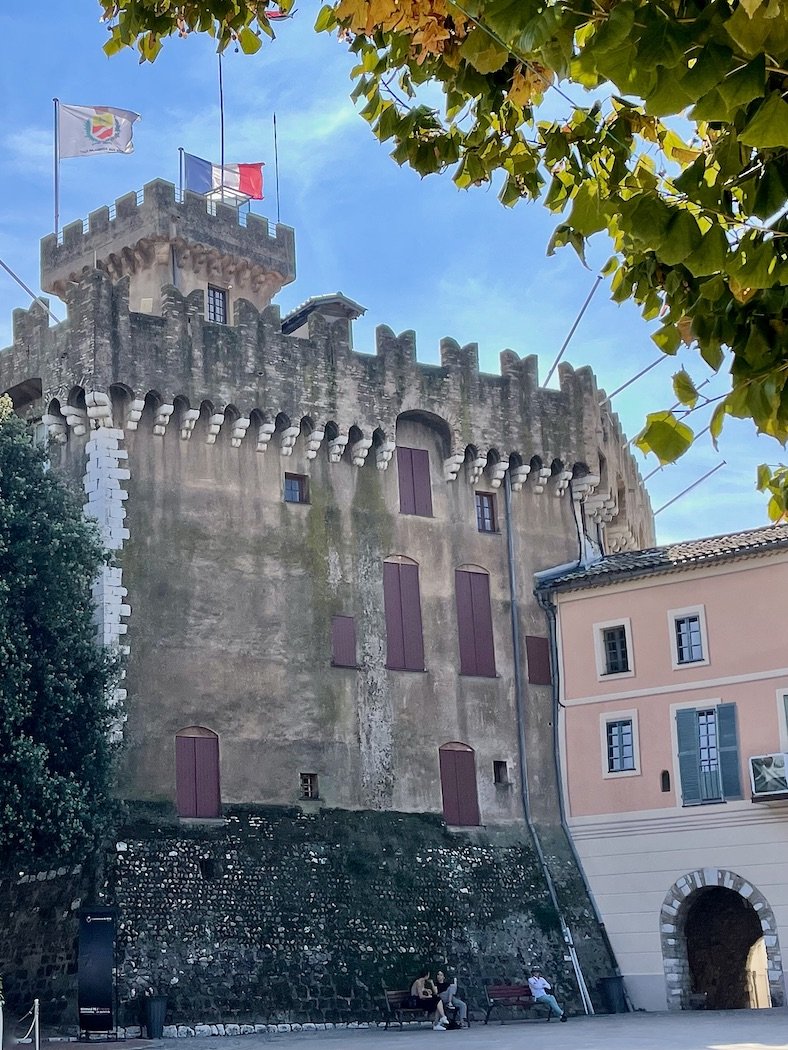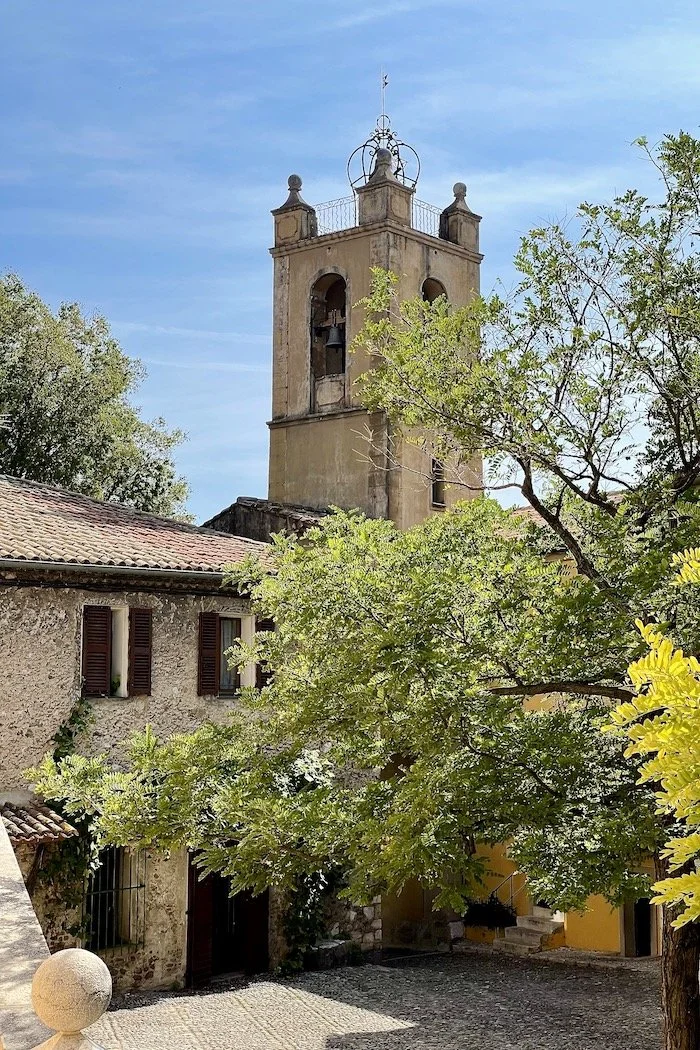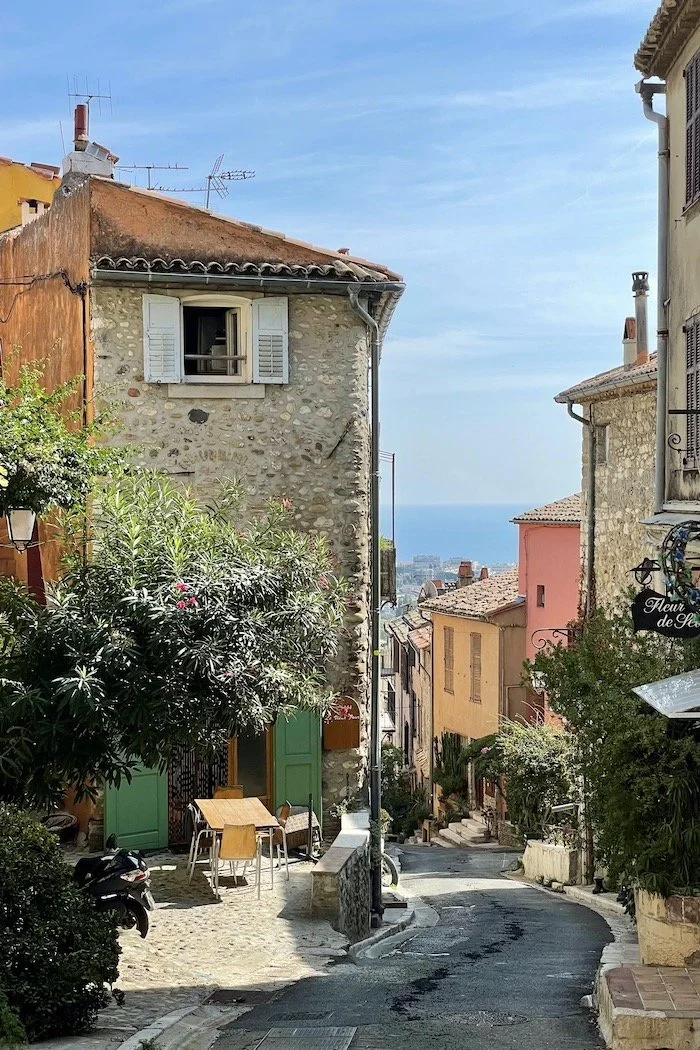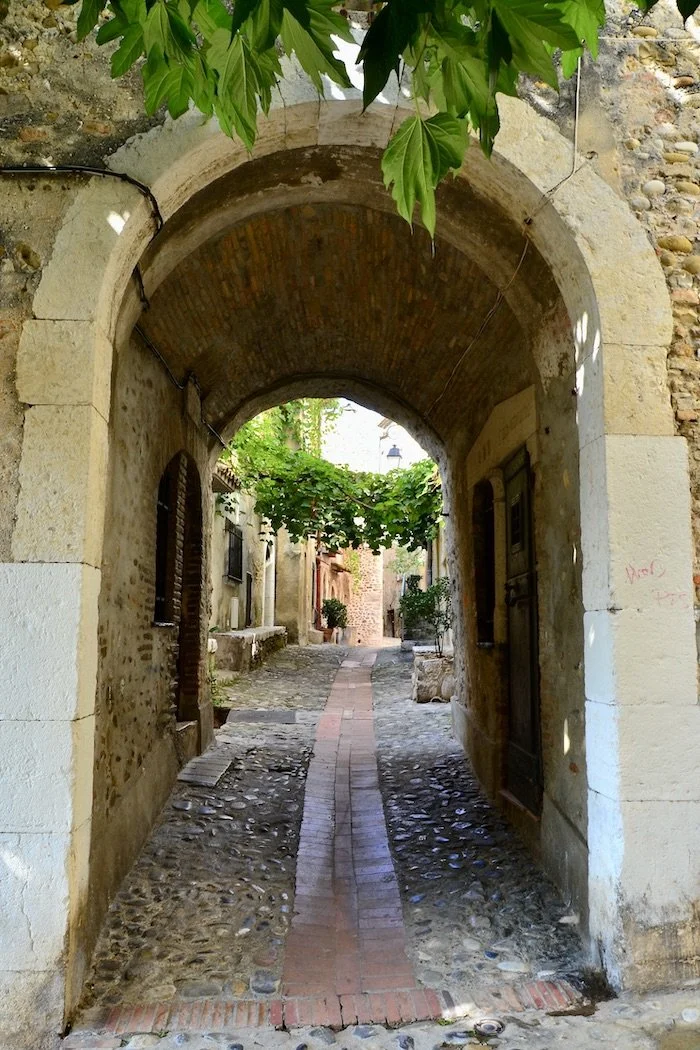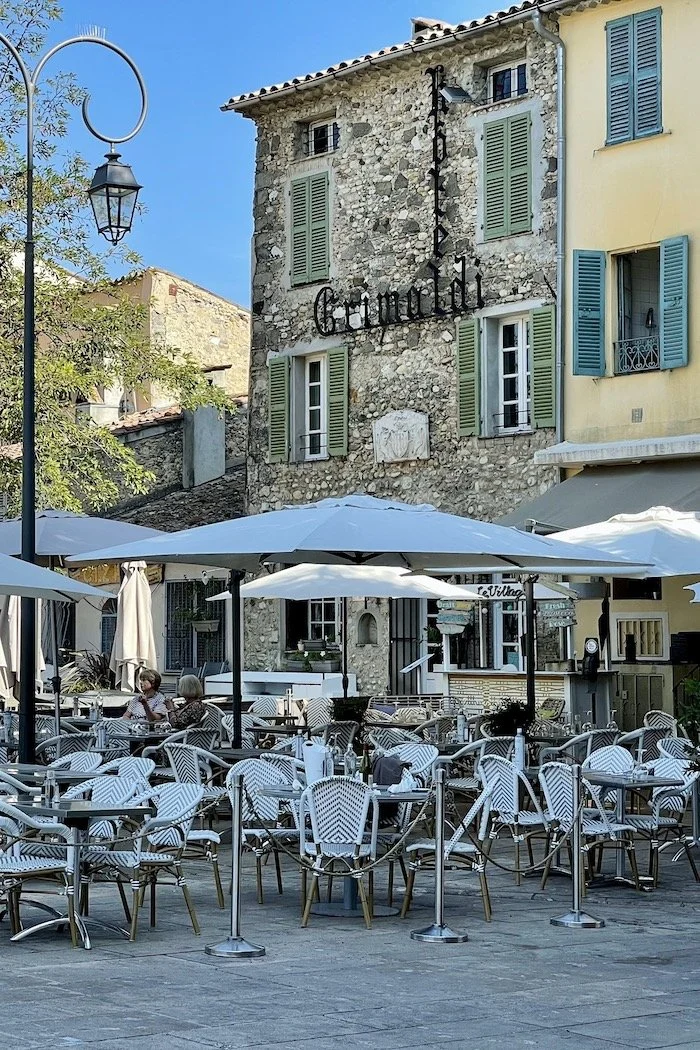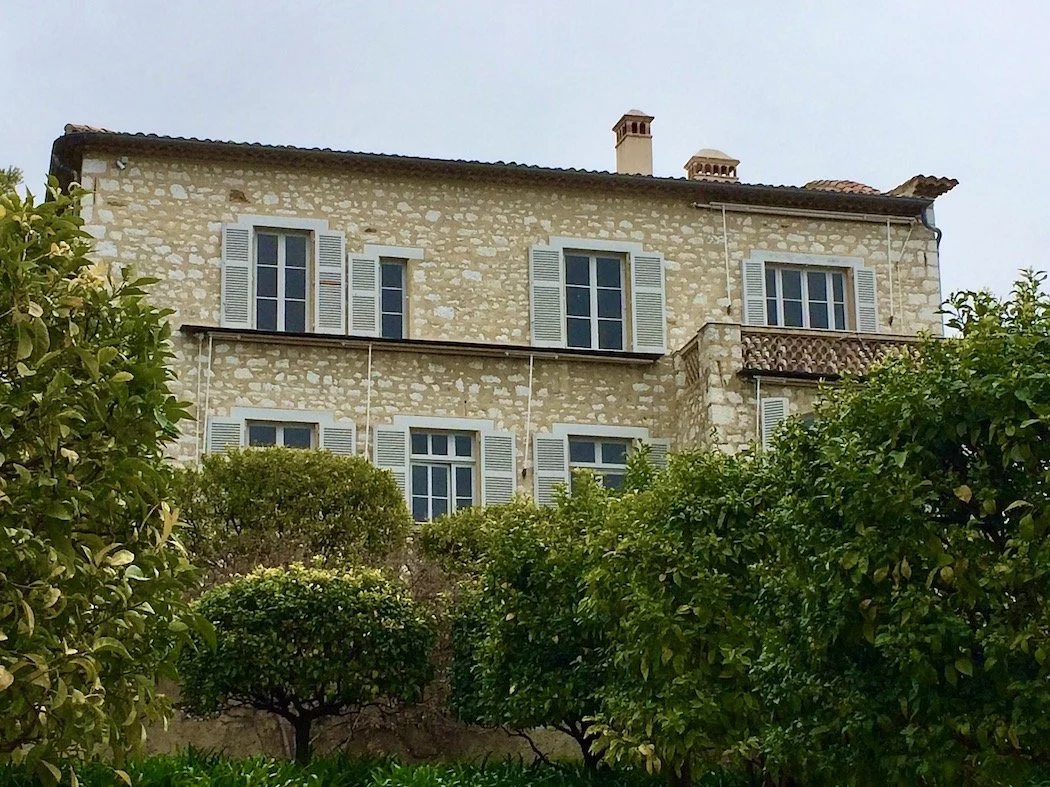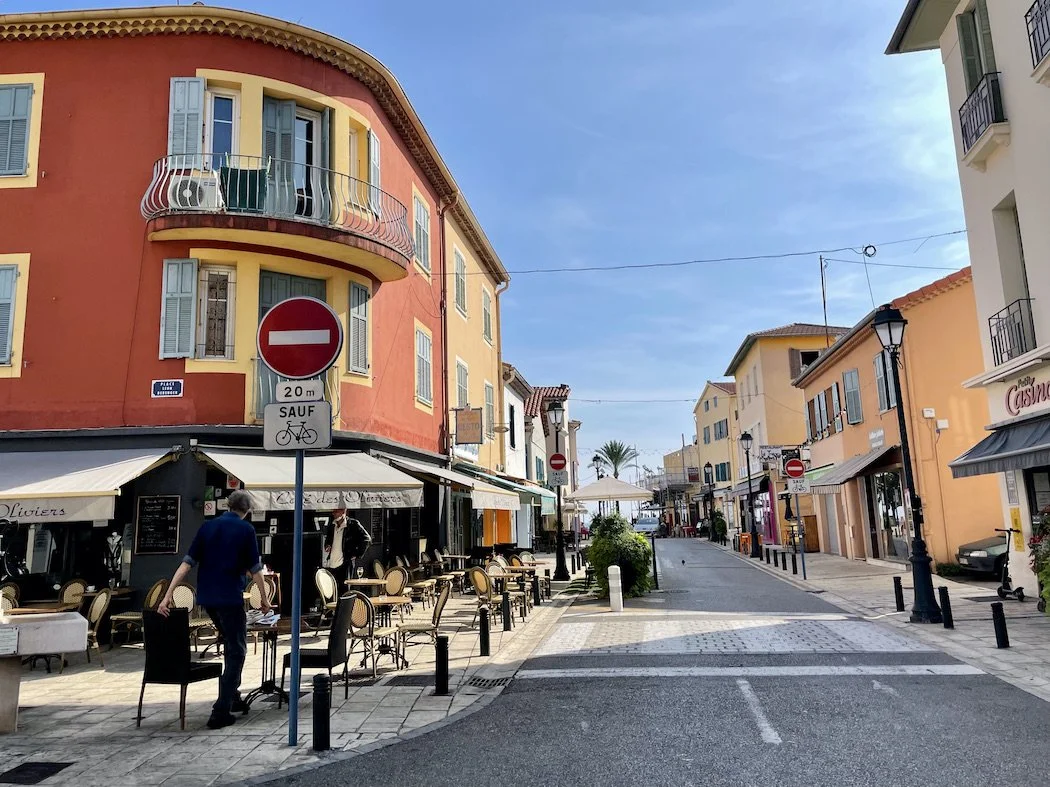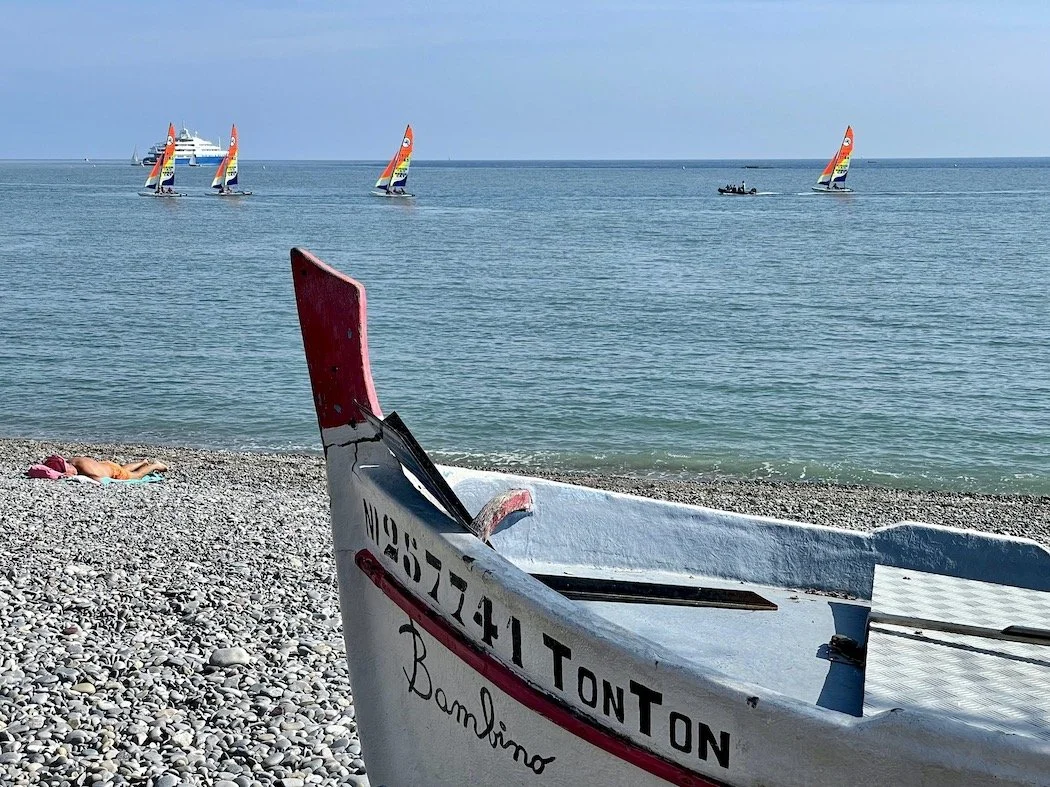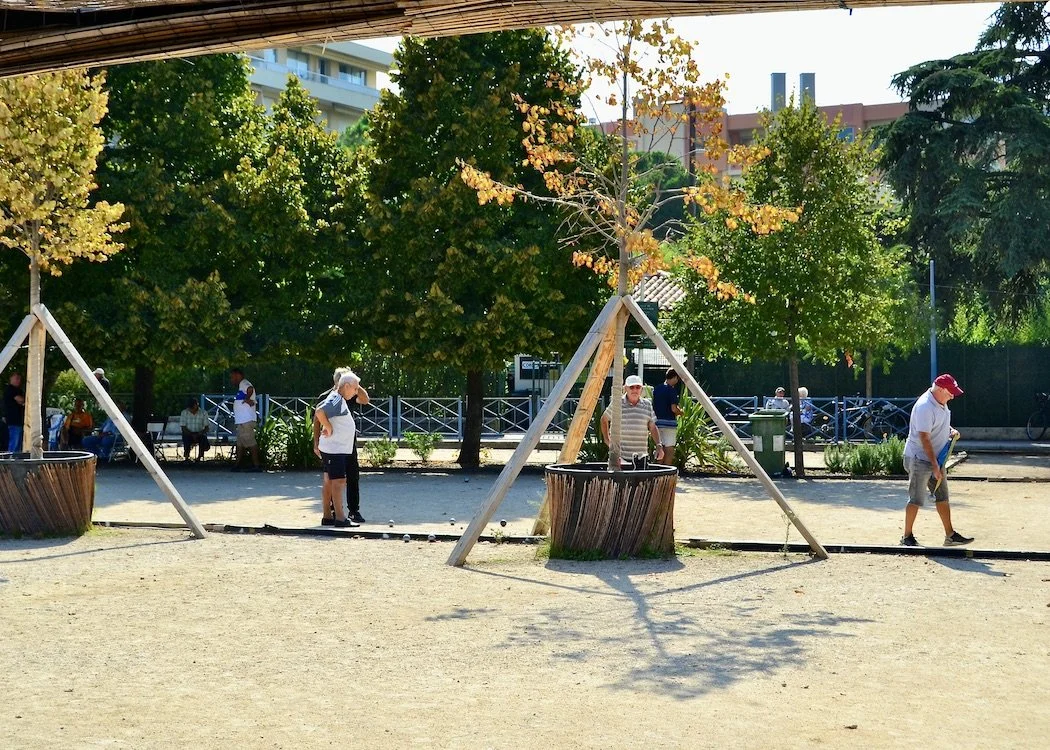Lesser-known Cagnes
View of Haute de Cagnes from a nearby hillside
“…I am generally interested in lesser-known histories. I like to investigate and illuminate these…” Jenni Olson
The Provençal town of Cagnes began as a hilltop fort though today it encompasses both a beachside fisherman’s village and the congested town that grew around it. From the foot of the hill, driving up the winding, ever-narrowing, one-way roads and continuing to the top on foot feels like entering a different world. This explains the non-awareness and maybe lack of curiosity about the treasures waiting here even though the square castle tower castle is visible from afar.
Perched up high, the fortified medieval village of Haut-de-Cagnes harks back to the days when knights protected the hamlet and castle. Built around 1300, the Château, now a museum, became a residence for a long line of Grimaldis, Monaco’s royal family, who lived here from 1309 until the French Revolution forced them to flee. The top of the crenelated tower offers a magnificent panorama of the coastline, and the hills of the backcountry, while the interior of the keep has a monumental double staircase and lavish baroque ceremonial rooms.
Around the Château, less than a thousand residents live in this ancient quarter that retains the calm authenticity of village life. Nearly empty, meandering cobbled streets, some so steep they turn into stairways, lead through arches, and end at small almost secret squares, a few that offer just one shaded bench. Wrought-iron balconies on stone houses dating to the 14th and 15th centuries overflow with flowering plants. The medieval Church of St. Peter and St. Paul is worth a visit for the altar painting of St. Peter receiving the keys to paradise and enchanting stained-glass window reflections on the stone-slab floor. During the past century, artists like Modigliani, Renoir, and Soutine have fallen in love with this quarter. Now, studios of artists, who still come for the quiet and the light, dot the village, which is otherwise devoid of souvenir shops and boutiques. On the main plaza, several restaurants serve French specialties.
The Impressionist master Auguste Renoir spent the final 12 years of his life in Cagnes, painting the landscape during his “Cagnoise” period. In 1908, he built a beautiful Neo-Provençal house surrounded by olive and citrus groves. With panoramas stretching down to Cap d’Antibes, the home is now a museum, where 14 of Renior’s paintings are on view, and his wheelchair still stands in front of an easel.
Down on the Côte d’Azur, Italian fishing families settled near a marshy sheltered cove in the early 19th century. Le Cros-de Cagnes became a village of narrow streets with low houses around the Chapelle de Saint-Pierre, as St. Peter is the patron saint of fishermen. Designed as the quarter’s main beacon from the sea, it is known locally as the yellow chapel. It’s still easy to miss Le Cros because of all the modern development that has sprung up around it. This modern Cagnes sur Mer has 3.5 km (2.2 miles) of beachfront, bordered by a beautifully renovated promenade for biking, jogging, and see-gazing, or swimming from the pebble beach.
Don’t miss:
A leisurely wander through the ancient lanes in Haute de Cagnes.
Lunch Tip:
La Spiaggia Plage right on the beach in Cagnes sur Mer.
Subscribe for inspiration to have my posts drop directly into your inbox. *If you enjoyed what you read, please share this post with like-minded travelers.*
*All photographs are mine, taken with my Nikon D3100 or iPhone 12 Pro.*

